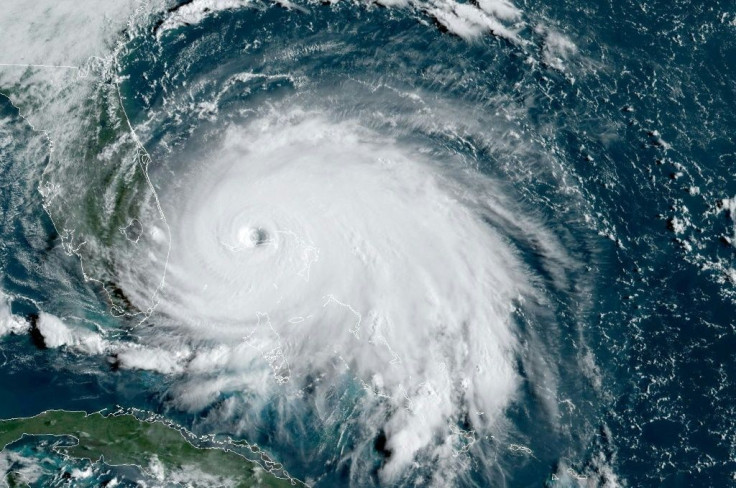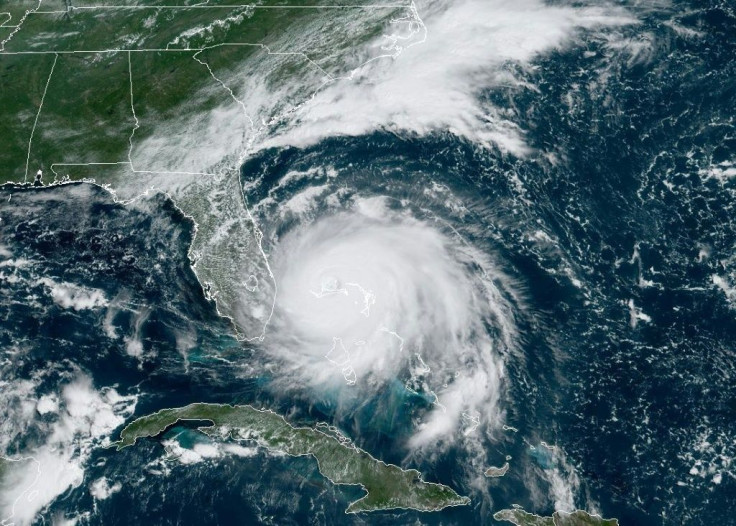Hurricane Dorian Lashes US Coastline After Devastating The Bahamas

After leaving the Bahamas battered and utterly destroyed, Hurricane Dorian is making its way towards the south-east coast of the U.S. with the most destructive parts of the storm set to hit the coast of Carolina.
Residents from Florida to Carolina are bracing for heavy rains and strong wind gusts as the devastating Hurricane Dorian, which has now been classified as a Category 2 storm, heads towards their shoreline, ABC News reported.
The hurricane is currently to the northwest of Daytona beach approximately 95 miles away from the shore. The storm which is going at 8mph northwest will pass dangerously close to Georgia, before hitting Carolina on Thursday.
South Carolina will receive 15 inches of rain from Hurricane Dorian, National Hurricane Center forecast informed. Grand Bahama Island, which is now in tatters, had received 30 inches of rain from Dorian.
The @NWSWPC has issued a High Risk area for flash flooding over eastern South Carolina & SE North Carolina for Thursday due to #Dorian. Very heavy rainfall totals of up 15 inches are possible. For more details see https://t.co/tW4KeFW0gB or https://t.co/LsPr5wAy5h pic.twitter.com/Ngp4I0mMQ6
— National Hurricane Center (@NHC_Atlantic) September 4, 2019
According to CNN meteorologist Chad Myers, the eye of the hurricane, which is 50 miles wide, and its close proximity to the U.S. coasts means winds that go over 100 mph could pass over land.
"If this storm is 30 miles offshore, that means the Carolina coast does, in fact, get the eye wall. It may not get the center of the eye, but who cares? The center of the eye is calm. It is the eye wall that is the most important part. And as it turns on up toward the north ... even if it's offshore, the eye wall could be very much onshore,” he said.
Here's what Hurricane Dorian is expected to do as it moves toward Florida, Georgia and the Carolinas https://t.co/2w46SO7boZ pic.twitter.com/PScwpdsLTG
— CNN (@CNN) September 4, 2019
The U.S. coastline is on alert, with flash floods, tornadoes and storm surge all possible to happen this week, according to the National Hurricane Centre. 7 counties in Florida are still under mandatory evacuation, while several coastal communities are also being evacuated.
Interstate highways leading away from the beaches in coastal areas have been turned into evacuation routes. The bad weather has forced the cancelation of close to 3000 flights in the U.S. this week.
Rescue operations have begun in the Bahamas as the eye of the hurricane passed over. However, the full magnitude of the destruction caused by the storm has still not come to light entirely.
WATCH: Aerial video from Tuesday show utter devastation in Marsh Harbor, one of the first places in the Bahamas ravaged by what was then Cat. 5 Hurricane Dorian. https://t.co/FXwdfIxECh pic.twitter.com/QIVaeAT5py
— NBC News (@NBCNews) September 4, 2019
The official death toll stands at 7.
“The devastation is unlike anything that we’ve ever seen before. We’re beginning to get on the ground, get our people in the right places. We have a lot of work in the days and weeks and months ahead,” National Security Minister Marvin Dames said.
Communication and power were still limited in the Bahamas, as power lines and infrastructure were destroyed. Flooded structures and roads are making it even more difficult for rescuers to reach the people trapped.

© Copyright IBTimes 2024. All rights reserved.





















